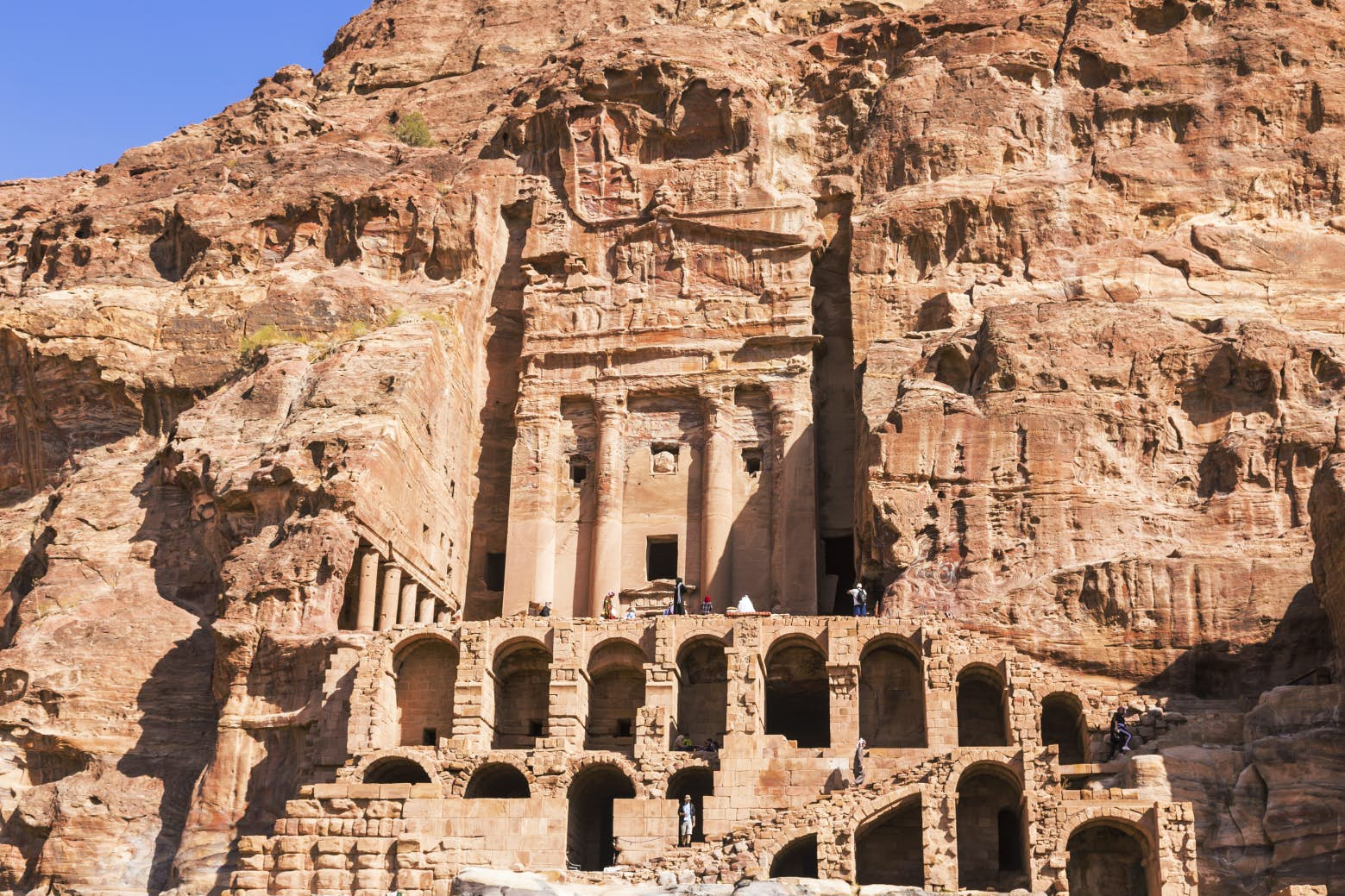The Royal Tombs of Jordan, located in the city of Petra, are a captivating testament to the grandeur and sophistication of the ancient Nabatean civilization. Carved into the towering cliffs of the Petra Archaeological Park, these tombs served as final resting places for the Nabatean kings and elites, showcasing their wealth, power, and artistic prowess. Today, the Royal Tombs stand as remarkable architectural marvels and draw visitors from around the world to witness their historical and cultural significance.
Historical Significance: The Nabateans, a prosperous Arab civilization that thrived from the 4th century BC to the 2nd century AD, established Petra as their capital city. As a symbol of their wealth and influence, the Nabatean rulers and elites constructed elaborate tombs within the cliffs surrounding the city. These tombs were meticulously carved and adorned with intricate facades, reflecting the artistic and architectural achievements of the time.
Architectural Splendor: The Royal Tombs of Jordan showcase a fusion of architectural styles, blending Nabatean, Hellenistic, and Roman influences. The tombs are characterized by their impressive facades, intricately carved details, and harmonious integration with the natural rock formations.
One of the most renowned Royal Tombs is the Urn Tomb, named for the large funerary urn-shaped structure crowning its facade. This tomb stands out for its grandeur and commanding presence. Other notable tombs include the Silk Tomb, adorned with beautiful multicolored rock layers, and the Corinthian Tomb, featuring a magnificent Corinthian-style columned entrance.
Exploring the Royal Tombs: Visiting the Royal Tombs allows you to immerse yourself in the ancient Nabatean world and marvel at their architectural achievements. As you walk through the narrow canyon known as the Siq, the dramatic cliffs gradually reveal the impressive facades of the tombs. The intricate carvings, delicate details, and vibrant colors create a sense of awe and wonder.

While the interiors of the tombs are not accessible to visitors, the external facades offer ample opportunities for exploration and appreciation. Take your time to study the intricate carvings and decorative elements, imagining the elaborate rituals and ceremonies that once took place within these sacred spaces.
Beyond the Royal Tombs: The Royal Tombs are just a fraction of the wonders that Petra has to offer. This ancient city is home to a vast array of archaeological sites, including the iconic Treasury (Al-Khazneh), the Monastery (Ad-Deir), and numerous rock-cut tombs and dwellings. Exploring Petra in its entirety is an adventure filled with historical discoveries and breathtaking natural beauty.
Tips for Visiting the Royal Tombs:
- Wear comfortable shoes, as the terrain can be uneven and involve some uphill walking.
- Bring sun protection, such as a hat, sunscreen, and plenty of water, as Petra can get hot, especially during the summer months.
- Engage the services of a local guide or join a guided tour to gain insights into the history and significance of the Royal Tombs and Petra as a whole.
- Plan your visit during quieter times, such as early morning or late afternoon, to avoid crowds and enjoy a more serene experience.
The Royal Tombs of Jordan stand as enduring testaments to the grandeur and architectural brilliance of the Nabatean civilization. Exploring these ancient burial grounds is an opportunity to delve into the rich history of Jordan, witness remarkable craftsmanship, and gain a deeper understanding of the cultural heritage that has shaped the region.
Book Your Flights : Here 30% OFF on Booking
Book Your Hotels : Here 20% OFF on Booking

0 Comment